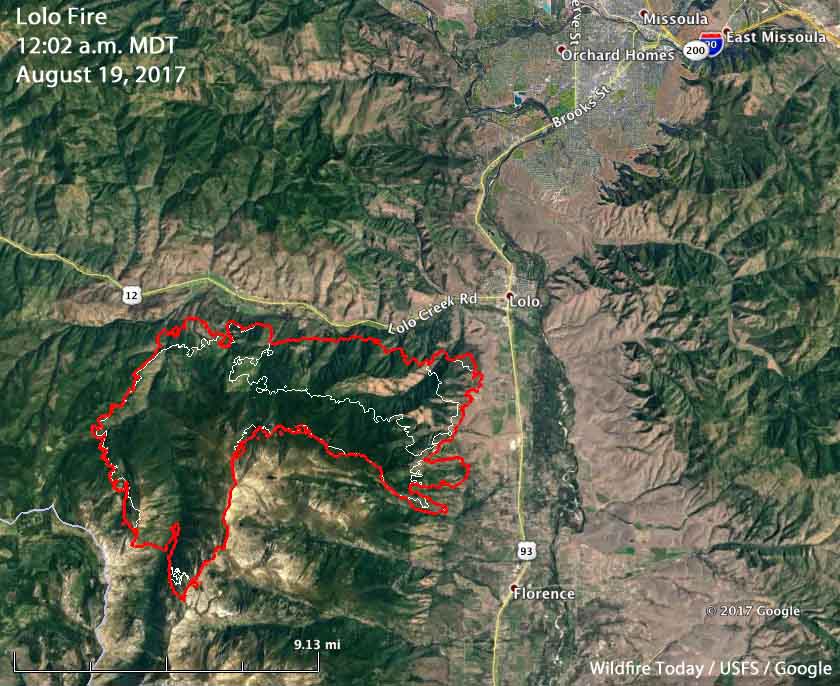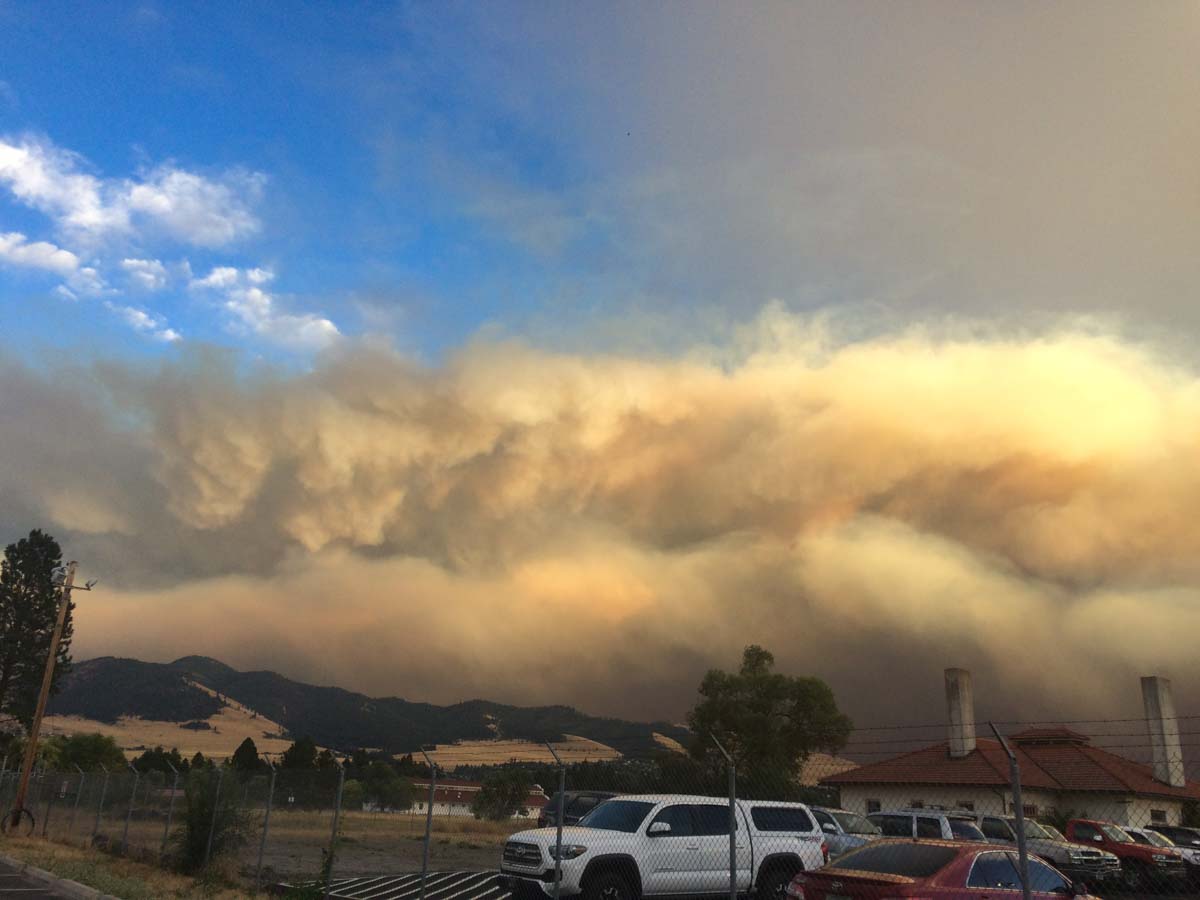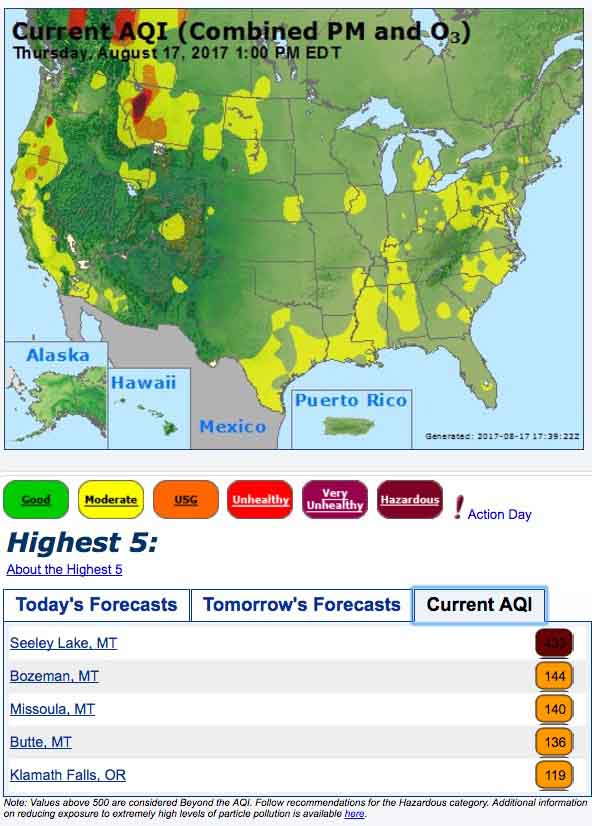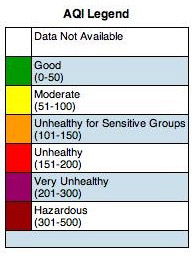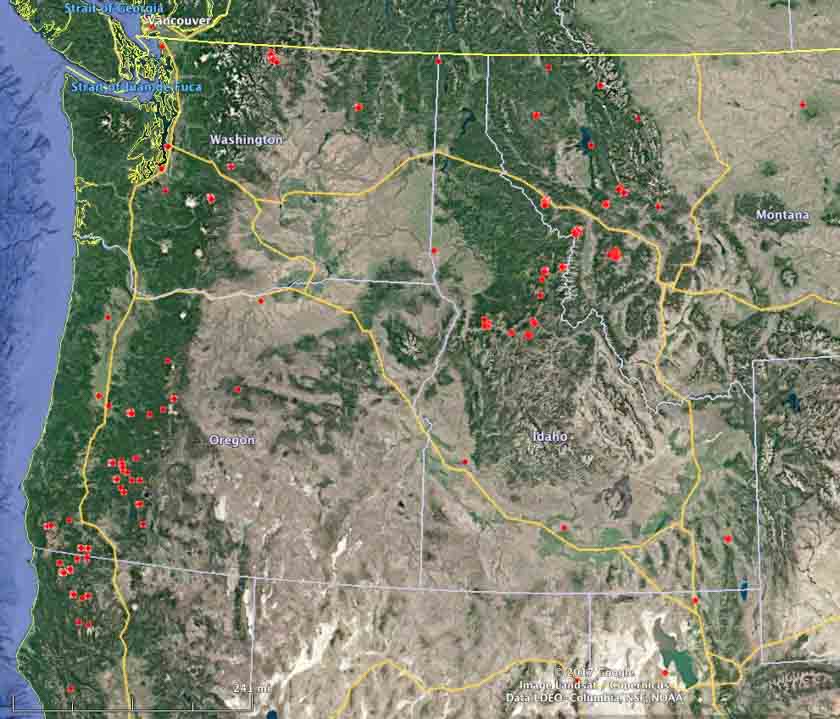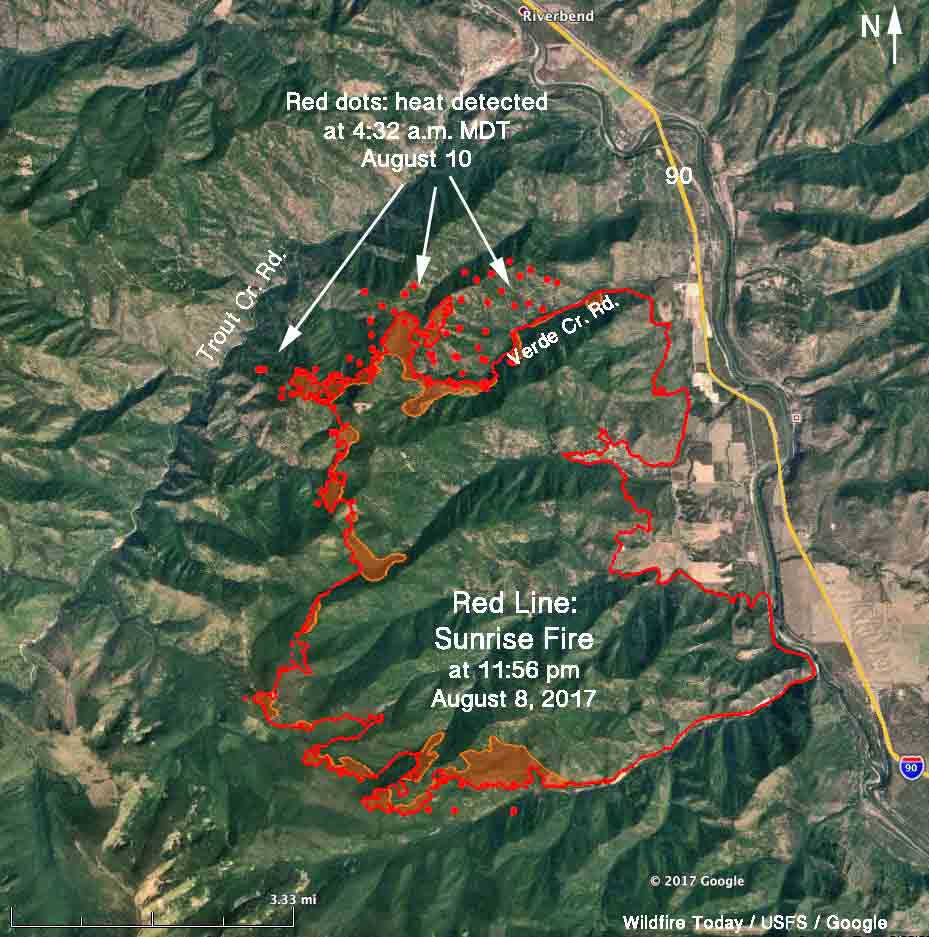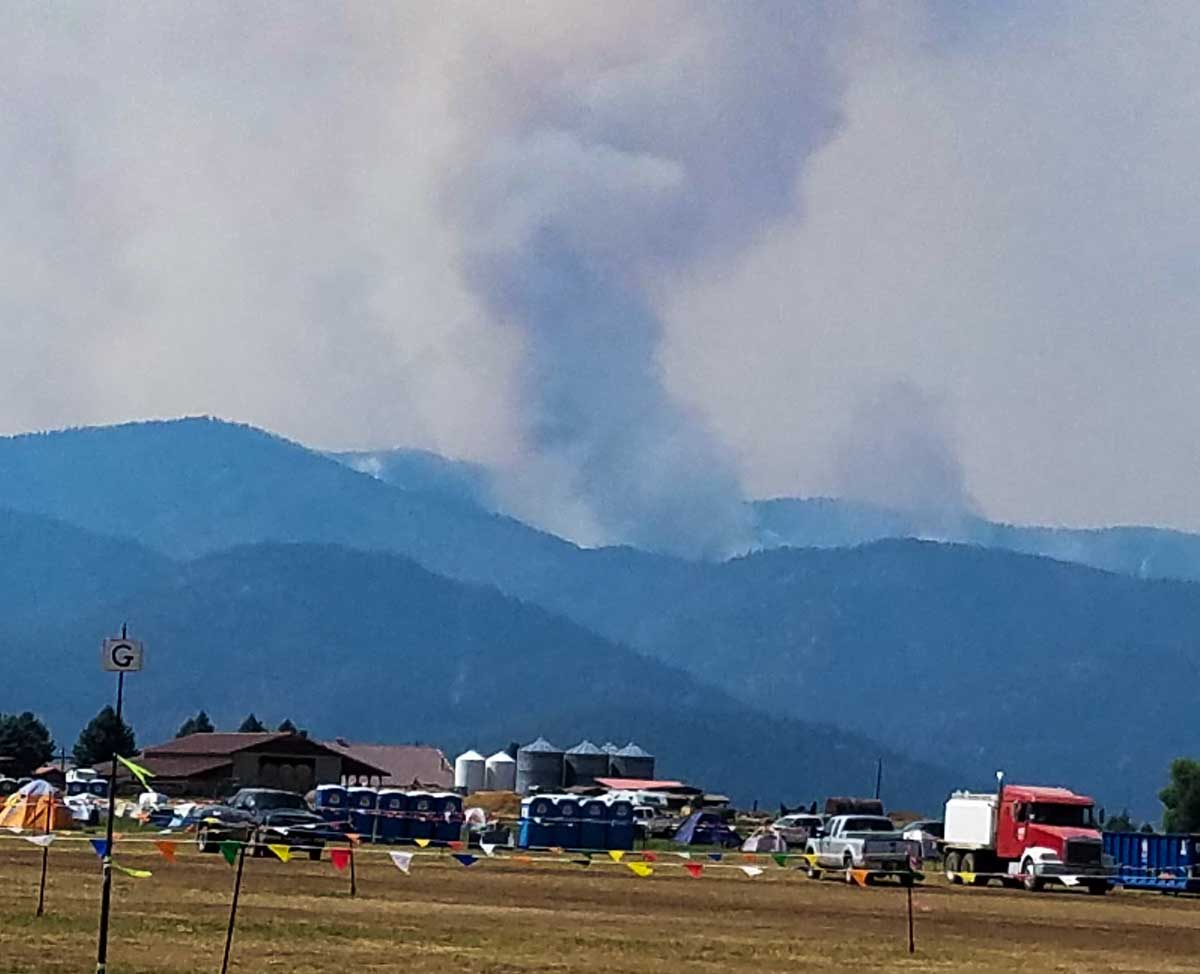Above: 3-D map of the Lolo Peak Fire, looking west. The red line was the perimeter at 11 p.m. MDT August 19, 2017. The white line was the perimeter 23 hours earlier.
(Originally published at 8:40 a.m. MDT August 20, 2017.)
The Lolo Peak Fire grew by another 2,800 acres Saturday bringing the total up to 30,765 acres, but some of that increase was the result of burnout or firing operations conducted to tie in the fire edge with barriers or firelines.
In spite of a Red Flag Warning in effect Saturday afternoon firefighters had a pretty good day, conducting firing operations on the northwest, north, and east sides of the fire. Operations Section Chief Mark Goeller said the Highway 12 corridor is looking fairly secure and mopup has started in that area as well as some locations on the east side south of Lolo and west of Florence and Carlson. There is still a great deal of uncontrolled fire edge on the south side of the fire in the higher elevations.
The west wind predicted for Sunday should make a planned firing operation on the west side easier than it would be with winds from other directions.
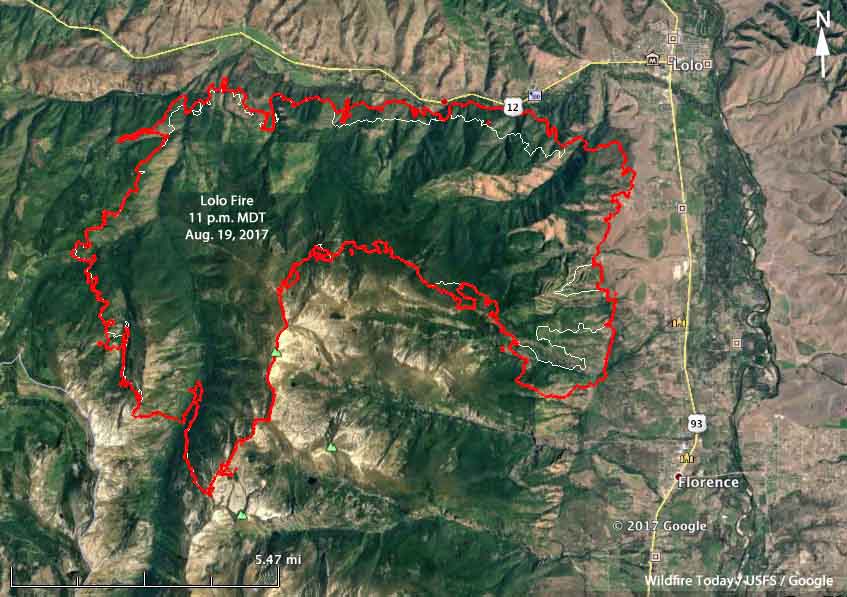
In the video below Mr. Goeller gives an excellent briefing on Saturday’s activities and the plans for Sunday.



